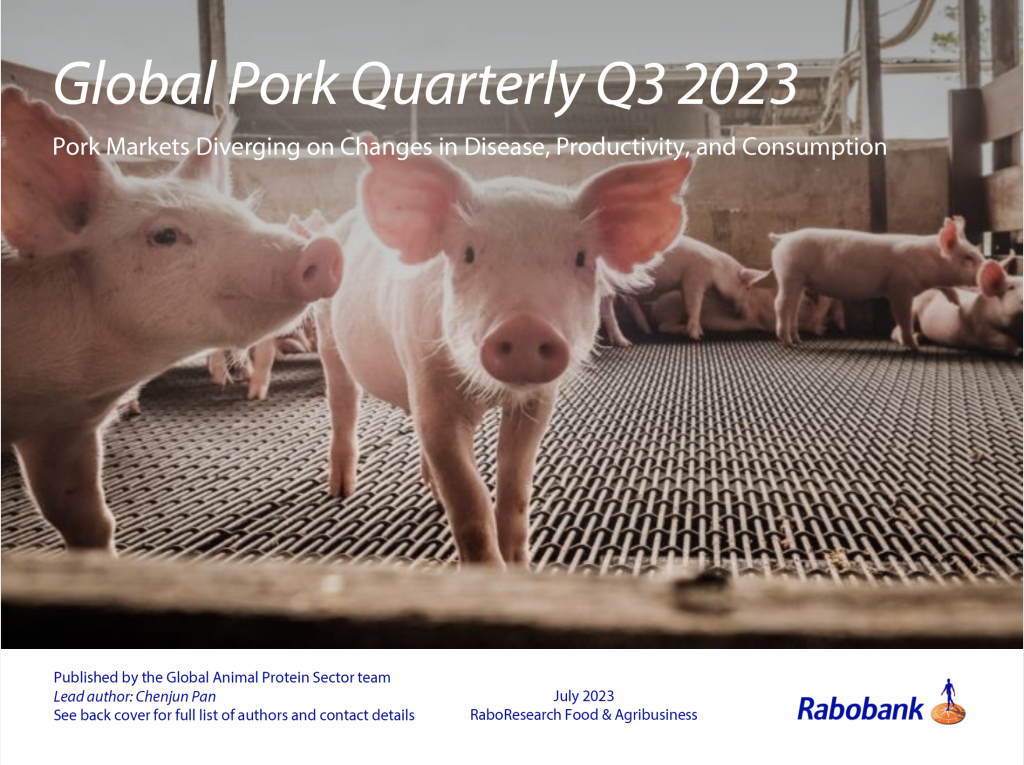According to Rabobank’s Global Pork Quarterly Q3 2023, the global pork industry finds itself at the crossroads of various influences. While the first few months of the year showed promise, the landscape is now marked by disease outbreaks, changes in consumer habits, and productivity challenges, leading to diverse market trajectories. The momentum of international trade is expected to encounter hurdles due to sluggish economic growth and uneven consumption trends. Despite this, there is a positive note in the form of potential improvements in production costs.
China, parts of Southeast Asia, and South America are grappling with export difficulties, while North America and Europe are navigating labour market constraints. Amid these changes, consumers are demonstrating pragmatic buying patterns, opting for smaller portions and alternative shopping channels. Notably, pork, positioned as a moderately priced option, remains resilient between these shifts.
Feed prices, albeit showing signs of softening, remain uncertain. Although there is an anticipation of price moderation in the third quarter of the year, the overall picture is influenced by global stock-to-consumption ratios. The sector continues to grapple with disease challenges, particularly African swine fever (ASF), impacting Asia and Europe’s production landscape. Spain’s struggle with porcine reproductive and respiratory syndrome (PRRS) also affects output, highlighting the ongoing importance of herd health management for producers worldwide.
Click here to access the full report compiled and published by Rabobank.
The South African Pork Producers’ Organisation (SAPPO) coordinates industry interventions and collaboratively manages risks in the value chain to enable the sustainability and profitability of pork producers in South Africa.









